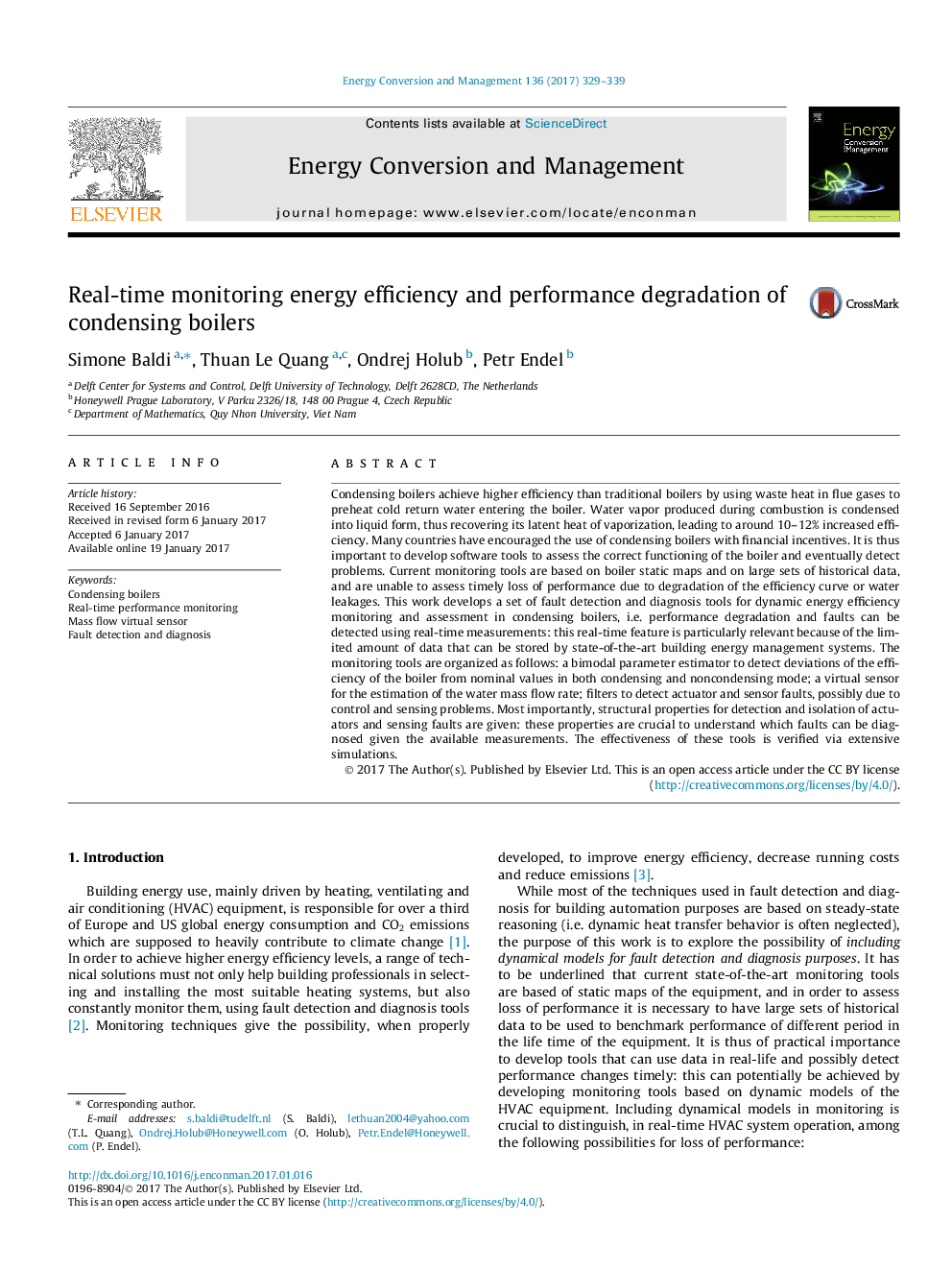| کد مقاله | کد نشریه | سال انتشار | مقاله انگلیسی | نسخه تمام متن |
|---|---|---|---|---|
| 5013150 | 1462826 | 2017 | 11 صفحه PDF | دانلود رایگان |
- Fully-fledged set of fault detection and diagnosis tools for condensing boilers.
- Detection of boiler performance degradation in condensing and noncondensing mode.
- Virtual sensing for estimation of water mass flow rate.
- Optimal Kalman detection of actuator and sensor faults.
- Structural properties for detection and isolation of faults.
Condensing boilers achieve higher efficiency than traditional boilers by using waste heat in flue gases to preheat cold return water entering the boiler. Water vapor produced during combustion is condensed into liquid form, thus recovering its latent heat of vaporization, leading to around 10-12% increased efficiency. Many countries have encouraged the use of condensing boilers with financial incentives. It is thus important to develop software tools to assess the correct functioning of the boiler and eventually detect problems. Current monitoring tools are based on boiler static maps and on large sets of historical data, and are unable to assess timely loss of performance due to degradation of the efficiency curve or water leakages. This work develops a set of fault detection and diagnosis tools for dynamic energy efficiency monitoring and assessment in condensing boilers, i.e. performance degradation and faults can be detected using real-time measurements: this real-time feature is particularly relevant because of the limited amount of data that can be stored by state-of-the-art building energy management systems. The monitoring tools are organized as follows: a bimodal parameter estimator to detect deviations of the efficiency of the boiler from nominal values in both condensing and noncondensing mode; a virtual sensor for the estimation of the water mass flow rate; filters to detect actuator and sensor faults, possibly due to control and sensing problems. Most importantly, structural properties for detection and isolation of actuators and sensing faults are given: these properties are crucial to understand which faults can be diagnosed given the available measurements. The effectiveness of these tools is verified via extensive simulations.
Journal: Energy Conversion and Management - Volume 136, 15 March 2017, Pages 329-339
